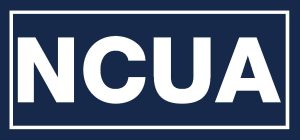A
Addendum
A supplemental document for borrowers advising them of the characteristics of the mortgage they are applying for. This document is often required when applying for a government loan program.
Adjustable-Rate Mortgage (ARM)
A type of mortgage rate loan whose interest rate changes periodically up or down, usually once or twice a year.
Adjustment Period
The time between changes in your interest rate and/or monthly payment with a variable rate loan. These intervals will vary depending on the type of loan.
Amortization
The means by which a home loan is scheduled to be paid off, including interest and principal, by a series of regular installment payments. Loans are typically amortized over 30 years.
Application Fee
A fee is charged to cover the lender’s out-of-pocket costs of processing your loan. Appraisal A formal, written estimation by a qualified appraiser of the current value of a home.
Appraiser
A licensed professional who determines the market value for property values. They offer an unbiased opinion based on current market data and the replacement value of the property.
Annual Percentage Rate (APR)
The cost of your credit is expressed as a yearly rate. It takes into account interest, points, and origination fees. Since all lenders are required to use the same guidelines in determining APR, this is a good basis for comparing the cost of various loan programs. For more information, see about APR Information.
Assumably/Assumption
A feature of the loan that permits you to transfer your mortgage and its specified terms to the person(s) purchasing your home. Having an assumable loan could make it easier for you to sell your home since the assumption of a loan usually involves lower fees and/or qualifying standards for the new borrower on a new loan.
B
Balloon
A short-term loan has a fixed rate and smaller payments for a short-term period followed by one large payment for the balance of the principal.
Bankruptcy
The legal process in which a person or firm declares the inability to pay debts. Upon a court declaration of bankruptcy, a person or firm surrenders assets to a court-appointed trustee and is relieved from the payment of previous debts.
Broker
An individual or company who does not fund loans himself but facilitates the processing or approval procedures for a customer. A broker generally uses a lender to approve and close loans for customers rather than close and fund the loan himself or itself.
Buy-Downs
Obtaining a lower interest rate (buying down the rate) by paying additional points to the lender. The lower rate may apply to the full duration of the loan or just the first few years. A buydown may be used to qualify a borrower who would not otherwise qualify. This is because a buydown results in lower payments, which are easier to qualify for.
C
Caps (interest)
A limit to the rise and fall of the interest rate on an adjustable-rate mortgage (ARM). A consumer safeguard.
Caps (payment)
A limit to the amount the monthly payment can grow on an adjustable-rate mortgage (ARM)—a consumer safeguard.
Certificate of Eligibility
A document that verifies the eligibility of veterans for a VA-guaranteed loan. This certificate is obtained through a local VA office.
Certificate of Title
A document showing ownership of record as reflected in public records.
Closing Costs
One-time costs that must be paid before the loan can be “closed” or funded. These costs may include such things as property taxes, insurance, broker’s fees, escrow fees, title insurance premiums, deed recording fees, title transfer tax, etc. Escrow instructions will stipulate which portion of the fees are to be paid by the buyer or seller. An estimate of closing costs called a Loan Estimate, will be given to you by the lender within a few days after receiving your loan application. All or a portion of your closing costs may be financed with some loan programs.
Co-operative
Cooperative Housing is an apartment building or a group of dwellings owned by a corporation, the stockholders of which are the residents of the dwellings. It is operated for their benefit by their elected board of directors. In a cooperative, the corporation or association owns title to the real estate. A resident purchases stock in the corporation, which entitles him to occupy a unit in the building or property owned by the cooperative. While the resident does not own his unit, he has an absolute right to occupy his unit for as long as he owns the stock.
Collateral
The property pledged to secure a loan.
Condominium
A single dwelling unit in a multi-unit structure in which each unit is individually owned. The owner holds legal title to his or her unit and owns the common areas and land jointly with other unit owners. An owner may sell, lease, and encumber his unit.
Conforming
The loan program guidelines meet Fannie Mae and or Freddie Mac underwriting requirements. This means the income, credit, and property requirements must meet nationally standardized guidelines.
Contributions
This is the amount other parties may contribute towards allowable closing costs, repairs, and prepaid items for a borrower. Other lender restrictions may apply.
Conventional financing
Home loans made by a lender without government backing provided, on FHA and VA loans.
Covenant
A written agreement that defines or restricts the use of a given property. This may include architectural restrictions or maintenance requirements.
Credit Report
A report made by a private agency that states a borrower’s credit history, current accounts, and account balances.
Creditors
Companies or individuals who loan money.
D
Deed
A written document recorded with the state or local government office which conveys real property.
Default
Failure to meet legal obligations in a contract. In mortgage terms, this generally means failing to make the required monthly payments.
Disclosure
A document that discloses to the customer characteristics of the mortgage. Items typically included are the terms and conditions, costs, and adjustment period.
Discount Points
Fees are paid to a lender to reduce the interest rate.
Down Payment
Usually between 10 and 20 percent, the down payment often demonstrates the borrower’s commitment to the property and to “make good” on the mortgage. A down payment is the difference between the purchase price of real estate property and the amount that is financed by the mortgage.
E
Earnest Money
A deposit made by a buyer of real estate towards the down payment to evidence good faith. A buyer gives “earnest money” to the seller as part of the purchase price to secure the transaction. This money is typically held by the real estate broker or escrow company.
Escrow
In the sale of property, a neutral third party, “the escrow agent,” is appointed to act as custodian for documents and funds during the transfer from seller to buyer. The funds can include taxes and mortgage insurance.
F
Fannie Mae or FNMA (Federal National Mortgage Association)
A secondary mortgage institution that holds the majority of home mortgages in the United States. FNMA buys conventional mortgages from lenders, given they meet conforming guidelines.
Federal Housing Administration (FHA)
A government agency within the Department of Housing and Urban Development (HUD) administers many programs, including housing subsidies and mortgage insurance.
Finance Charge
Any charge or fee that is imposed by the lender as a condition of the loan (unless excluded by regulation) and is payable by the borrower.
Fixed Rate Mortgage (FRM)
A loan where the rate of interest is fixed over the life of the loan. Payments on a fully amortized fixed-rate loan will not change.
Foreclosure Repossession of the Property
A legal proceeding by which a mortgage lender may claim title to the mortgaged property if the borrower fails to repay the loan.
Federal Home Loan Mortgage Corporation (Freddie Mac or FHLMC)
A private corporation chartered by Congress to make funds from the capital markets available for home financing. It does this by operating a secondary market for home loans, buying such mortgages from lenders, and selling securities backed by those mortgages.
Free and Clear
This is a term used for a property that does not have any liens or debts recorded on the title. That means the owner does not have a mortgage.
G
Government National Mortgage Association (Ginnie Mae or GNMA)
The source of funds for FHA or VA residential mortgages.
H
Hazard Insurance
A form of insurance in which the insurance company protects the insured from specified losses. An example of some specified losses would be fire, flood, or windstorm damage.
I
Impound/Escrow Account
This is an account set up by the lender to collect money monthly for property tax, hazard insurance, and mortgage insurance to pay on the borrower’s behalf when the applicable charge becomes due. Any unused funds are returned to the borrower upon payoff of the loan.
Index
They are used by lenders to calculate the interest adjustments on variable-rate loans. Most programs use either the 11th District Cost of Funds or the 1-year Treasury Rate as the index. Some indexes are more volatile than others. This can affect the adjustments in interest rates and, subsequently, monthly payments.
Initial rate
A fixed interest rate is charged for the first six or twelve months of a variable-rate loan. Normally, this rate will be lower than prevailing market rates.
Interest
This is the amount of money that a borrower is charged over a pre-determined period of time by a creditor for the issuance of a loan/mortgage.
Interest Rate Cap
A safeguard is built into a variable-rate loan to protect the consumer against dramatic increases in the rate of interest and, consequently, in the monthly payment. For example, a variable rate loan may have a two-percentage point limit per year on the amount of increase or decrease, as well as a five percentage point limit over the life of the loan.
J
Jumbo Loan
A form of insurance in which the insurance company protects the insured from specified losses. An example of some specified losses would be fire, flood, or windstorm damage.
K
L
Lien
A claim against the property for the payment of a debt, judgment, mortgage, or taxes.
Loan estimate
A written estimate of closing costs associated with the financing transaction is to be provided by the lender within three days of application.
Loan to Value (LTV)
This is expressed as a percentage figure of the sales price or appraisal, whichever is lower, divided by the loan amount. If a purchase loan reflects 80% LTV, that means the borrower paid a 20% down payment.
M
Margin (spread)
An amount, expressed as a percentage, is added to an index to determine the interest rate on a variable-rate loan (e.g., index rate + 2% margin). Different loan programs may use different margins and indexes. With a variable rate loan, this margin (spread) generally does not change once it is established in your documents.
N
Negative Amortization
A situation may occur on variable rate loans which have the “payment cap” features. Because your monthly payment is capped, your adjusted payment amount may, at times, be insufficient to pay the actual amount of interest due. The unpaid (deferred) interest would then be added to your loan balance. This increase in your loan balance is known as “negative amortization.” A borrower usually has the option of increasing the monthly payment in any given month to avoid negative amortization or making a lump sum payment to pay off any accrued negative amortization.
O
Origination Fee or Points
The charge by a lender or broker is connected with originating a loan. This is different from discount points, which are used to buy down the rate of interest.
P
Payment Cap
Limits the amount by which the payment on a variable rate loan can increase or decrease at each payment adjustment interval (typically one year). A payment cap ensures that the payment changes occur at a gradual pace.
Principal
The amount borrowed or the remaining unpaid balance on a loan. It may also be used to describe the part of a monthly payment that reduces the remaining balance of a mortgage.
Principal-Interest-Taxes-Insurance (PITI)
The total of your monthly home payment, including taxes and insurance.
Private Mortgage Insurance (PMI)
Insurance guarantees the lender payment of the balance of the loan not covered by the sale of the property in the event of foreclosure. PMI is normally required on conventional loans where the LTV is greater than 80% and will be included as part of your monthly payment.
Points and Fees
A point is a loan charge equal to one percent of the principal amount of the loan. Points are payable at the close of escrow and may be paid by the buyer or seller or split between them. (E.g., Two points charged on a $100,000 loan would equal $2,000.) In addition, a flat dollar amount fee may also be charged. Under some lending programs, a buyer may be allowed to include these points and fees as part of the total amount financed.
Prepaid Finance Charge
A “finance charge” paid by the borrower separately, in cash or by check, before or at the closing of a loan transaction. A prepaid finance charge is typically something that is withheld from the loan proceeds. Prepaid finance charges may include items such as loan origination fees, discount points, prepaid interest, and the initial PMI.
Prepayment Penalty
A fee for paying off the principal amount of the loan prior to the pre-agreed term.
Planned Unit Development (PUD)
A type of development that provides more planning flexibility than traditional zoning. Buildings are often clustered on smaller lots, permitting the presence of natural features in common areas or park areas. Individual properties are owned fee simple with the common areas owned jointly or deeded to the local government.
Q
R
Rate Lock
Assures that the rate in effect on the date you submit your loan application, during loan processing, or at the time of final approval will be the final rate on your loan when funded. This assurance usually expires after a specified period of time.
Ratios
A ratio used as an underwriting guideline to determine the amount of debt a borrower may have compared to their income (e.g. Borrower’s house payment divided by gross income). A ratio may be used to calculate the total allowable debt or the monthly housing portion. It is expressed as a percent.
Refinance
Negotiation of a new loan in order to pay off an existing loan. Homes are usually refinanced in order to (a) take advantage of lower interest rates, (b) switch from one loan type to another (e.g., from variable to fixed), or (c) generate cash from built-up equity. Since refinancing generally involves new loan costs, these costs must be weighed against the benefits to be gained.
Reserves
This is the amount of liquid assets that the lender needs to verify in the borrower’s account above and beyond the funds required to close the transaction. This amount is expressed as a multiple of the total monthly payment (i.e. if PITI is $1200 per month, 2 months reserves would be $2400.) Reserves remain in the borrower’s account.
S
Self Employed
A borrower is typically considered self-employed if they own 25% or more of the company by which they are employed.
T
Term
The number of years before your loan is scheduled to be paid off. 15-year and 30-year terms are the most common.
Title Company/Settlement agent
This is the company that will research the property information with the city/state where you live to make sure the title is clear. They also help with loan consummation by preparing the documents for closing, assisting with closing and sending the documents to the appropriate parties after closing.
Title Insurance
An insurance policy issued by a title insurance company ensures that the title will reflect only liens allowed by the lender at closing. Liens that need to be cleared prior to closing may include other mortgages, tax liens, and judgments.
Truth and Lending Disclosure
A disclosure is required by Federal law (The Truth in Lending Act). Discloses the terms of a mortgage, using required terminology, such as the Annual Percentage Rate (APR).
U
Underwriting
Standards are established by a lender to determine whether a borrower qualifies for a loan.
V
Veterans Administration (VA)
A government agency providing guarantees for lenders on approved loans to qualifying veterans.
Verification of Documents
Most loan programs require the mortgage company to verify information on loan applications, such as the borrower’s employment, bank account balances, and credit references. Often, these verifications are referred to as VOE’s (verification of employment), VOD’s (verification of deposits) and VOM’s (verification of mortgage).
W
X
Y
Z








